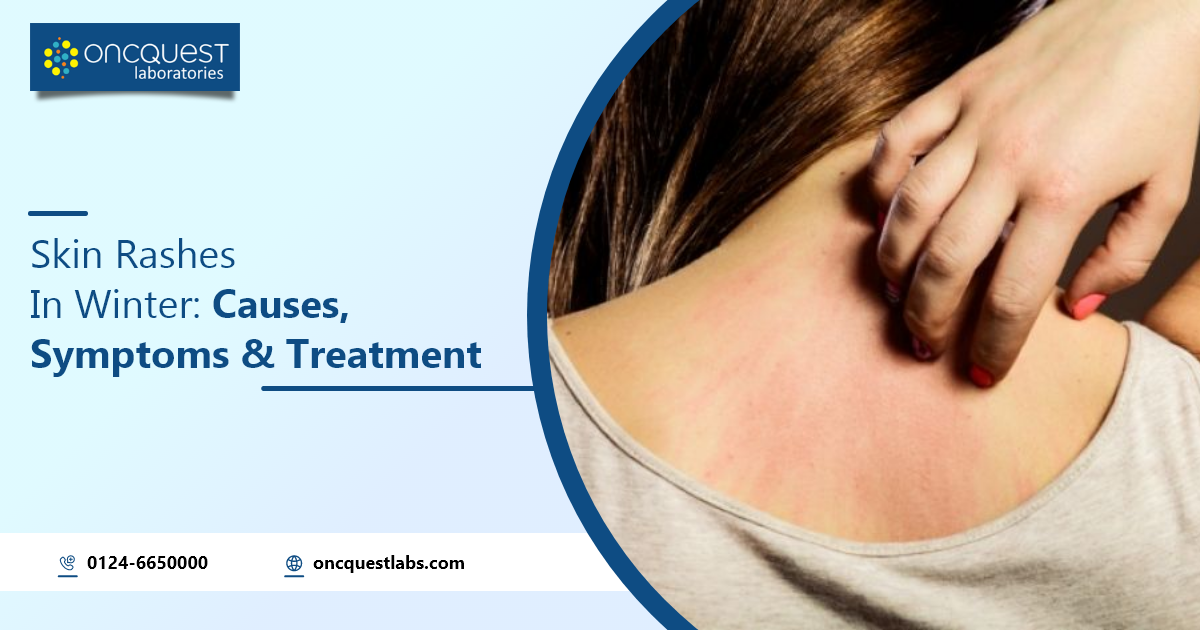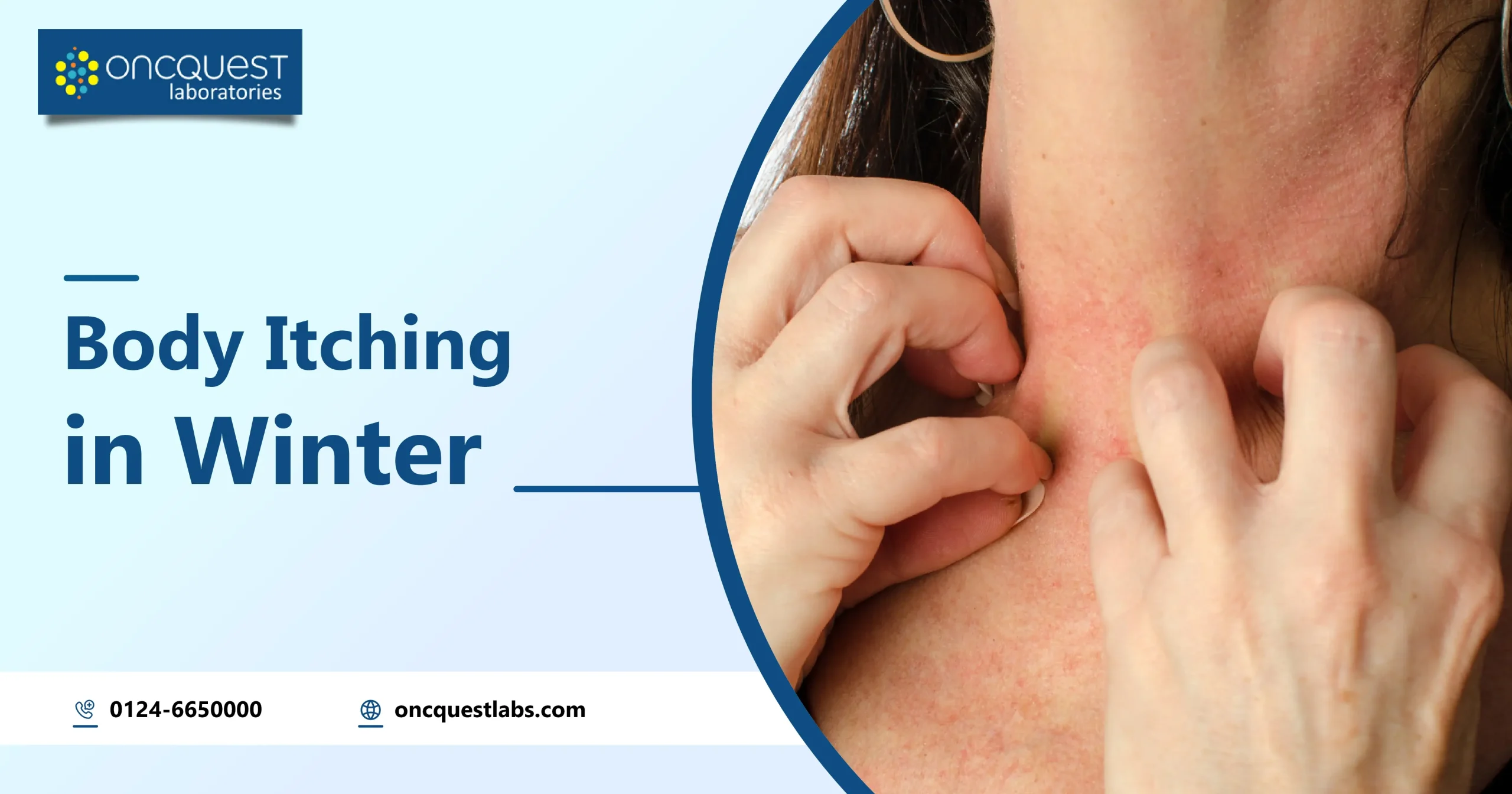Winter is a beautiful season filled with snowflakes and cosy sweaters, but it can also bring its fair share of skin problems, particularly skin rashes. As the temperature drops and humidity levels decrease, our skin becomes more vulnerable to dryness, irritation, and various forms of dermatitis. In this blog, we’ll delve into the causes, symptoms, and how to manage common winter skin rashes, including those on the hands and face. We’ll also provide some valuable testament from individuals who have successfully tackled these issues.
Contents
An overview of winter skin rashes
Winter skin rashes are a common issue that many people face when the temperature drops. These rashes can be caused by a variety of factors related to the winter season. Here’s an overview of winter skin rashes:
1. Dry Skin (Xerosis): Low humidity in the air, both indoors and outdoors, can lead to dry skin during the winter. This can cause itching, flaking, and tightness of the skin.
2. Contact Dermatitis: Cold temperatures, wind, and the use of certain winter clothing materials can trigger contact dermatitis. It results in red, itchy, and inflamed skin where contact occurs.
3. Hand Dermatitis: Prolonged exposure to cold and dry conditions can lead to hand dermatitis, particularly on the knuckles and fingers. Symptoms include redness, itching, and, in severe cases, cracking of the skin.
4. Facial Dermatitis: The delicate skin on the face is susceptible to winter irritation due to harsh weather conditions, excessive washing, or the use of inappropriate skincare products. Symptoms include redness, flakiness, and a burning or stinging sensation.
5. Chilblains: These are painful, itchy, red, and sometimes swollen areas on the fingers or toes. They can be caused by exposure to cold and damp conditions and typically improve with warmth.
6. Winter Itch (Pruritus Hiemalis): Dry winter air can cause itching without a visible rash. This can be uncomfortable and may lead to scratching, potentially worsening the condition.
7. Urticaria (Hives): Cold urticaria is a condition where hives or welts develop in response to exposure to cold temperatures. These hives can be itchy and may appear on the skin during cold weather.
8. Lip Dermatitis: Dry, chapped lips are a common issue in winter. Lips can become cracked, painful, and may even bleed if not properly cared for.
To manage and prevent winter skin rashes, it’s essential to keep your skin hydrated with a good-quality moisturiser, avoid excessive hot water usage, wear appropriate clothing to protect your skin from cold and wind, and use gentle skincare products. If skin rashes persist or worsen, consult a dermatologist for proper diagnosis and treatment. Taking proactive measures to care for your skin during the winter can help you enjoy the season without the discomfort of skin issues.
Why skin rashes in winter caused
Skin rashes in winter are caused by a combination of environmental and lifestyle factors that can be particularly harsh on the skin during the cold months. Here are some of the primary reasons why skin rashes occur in winter:
1. Low Humidity: Winter air tends to be dry, and indoor heating systems further reduce humidity levels. This dry air can lead to moisture loss from the skin, resulting in dryness and irritation.
2. Cold Temperatures: Exposure to cold weather can cause the skin to constrict blood vessels and reduce oil production, making the skin more susceptible to dryness, redness, and inflammation.
3. Wind: Cold, blustery winds can strip the skin of its natural oils and further exacerbate dryness and irritation, particularly on exposed areas like the face and hands.
4. Hot Showers: While hot showers can be tempting in winter, they can strip the skin of its natural oils and disrupt the skin’s barrier function, leading to dry and sensitive skin.
5. Overwashing: Frequent washing, especially with hot water, can remove essential oils from the skin, leading to dryness and even exacerbating existing skin conditions.
6. Harsh Clothing Materials: Some winter clothing materials, like wool, can be abrasive and irritating to the skin, leading to contact dermatitis and rashes.
7. Excessive Clothing Layering: Layering clothing in an attempt to stay warm can trap sweat and moisture against the skin, creating a perfect environment for rashes to develop.
8. Allergens: People may spend more time indoors during winter, where allergens like dust mites and mould can be more concentrated, potentially triggering skin allergies and rashes.
9. Inadequate Skincare: Failing to adjust your skincare routine to address the specific needs of winter-dry skin can contribute to rashes. This includes not using a suitable moisturiser and not protecting the skin from the elements.
10. Hot Beverages and Spicy Foods: Consuming excessively hot beverages or spicy foods can sometimes lead to rashes or flushing on the skin, especially in individuals with sensitive skin.
Understanding these causes can help individuals take preventive measures and adopt a skincare routine that protects and nourishes the skin during the winter, reducing the likelihood of developing skin rashes.
Common skin rashes in winter
1. Winter Rash on Hands (Dermatitis)
Causes: Prolonged exposure to cold and dry conditions can lead to hand dermatitis, characterised by redness, itchiness, and sometimes, cracking of the skin.
Symptoms: Dry, itchy, and inflamed skin on the hands. In severe cases, blisters may develop.
Testament: Use a good quality moisturiser and wear gloves when going outside to protect your hands. If the rash persists, consult a dermatologist for a suitable treatment.
2. Winter Rash on Face (Facial Dermatitis)
Causes: Facial skin is delicate and can become irritated due to harsh winter conditions, excessive washing, or the use of the wrong skincare products.
Symptoms: Redness, flakiness, burning or stinging sensations on the face.
Testament: Opt for a gentle, fragrance-free cleanser and a rich, hydrating moisturiser. Reduce hot water usage on your face and use sunscreen even in winter to shield your skin from UV rays.
Skin rashes in winter: symptoms
Skin rashes in winter can manifest with various symptoms, and the specific symptoms can vary depending on the type of rash and the individual. Here are some common symptoms associated with winter skin rashes:
1. Dryness: Dry skin is a common symptom, characterised by a feeling of tightness and roughness on the affected skin.
2. Itching: Itching is a hallmark symptom of many winter skin rashes. It can range from mild to severe and can be quite uncomfortable.
3. Redness: The affected area of the skin may appear red or flushed, particularly in cases of contact dermatitis or chilblains.
4. Inflammation: Inflamed skin can be swollen, warm to the touch, and may sometimes have a burning or stinging sensation.
5. Flaking: The skin may peel or flake, particularly in areas with dry skin, like the hands or face.
6. Cracking: In severe cases of dryness, the skin may crack, leading to painful fissures, especially on the hands.
7. Blisters: Some rashes, such as hand dermatitis or certain types of contact dermatitis, can lead to the formation of small fluid-filled blisters.
8. Hives: In cases of cold urticaria (cold-induced hives), individuals may experience itchy raised welts on the skin.
9. Chapped Lips: Lip dermatitis can result in dry, chapped lips that may become painful or bleed.
10. Sensitivity: The skin may become more sensitive and may react adversely to skincare products or environmental factors, exacerbating the rash.
11. Burning or Tingling: Some individuals may experience a burning or tingling sensation in the affected areas.
It’s essential to identify the specific symptoms and the type of rash to determine the most appropriate treatment and preventive measures. Proper skincare, avoiding irritants, and consulting a dermatologist when necessary can help alleviate and manage these symptoms effectively.
Skin rashes in winter: treatment
The treatment for skin rashes in winter depends on the type of rash and its severity. Here are some general guidelines for treating and managing common winter skin rashes:
1. Moisturise: Keeping the skin well-hydrated is essential. Use a rich, fragrance-free moisturiser regularly, especially after bathing or washing your hands or face.
2. Avoid Hot Water: Hot water can exacerbate skin dryness. Use lukewarm water for bathing and washing your face and hands.
3. Gentle Cleansers: Choose mild, soap-free, and fragrance-free cleansers for your face and body. Avoid products that can strip the skin of its natural oils.
4. Protect the Skin: Wear appropriate clothing to shield your skin from the cold and wind. Choose breathable fabrics and consider layering to stay warm without overheating.
5. Gloves: If you’re prone to hand dermatitis, wearing gloves when going outside can protect your hands from the cold and dry conditions.
6. Lip Balm: Use a good-quality lip balm to prevent and treat chapped lips. Look for products with hydrating ingredients like beeswax, shea butter, or lanolin.
7. Topical Steroids: In some cases of contact dermatitis or eczema, a dermatologist may prescribe a topical steroid cream or ointment to reduce inflammation and itching. Follow the doctor’s instructions carefully.
8. Antihistamines: For rashes with severe itching, over-the-counter antihistamines may provide relief. Consult with a healthcare professional before using any medication.
9. Cold Compress: For chilblains or hives, a cold compress can help alleviate itching and reduce inflammation.
10. Consult a Dermatologist: If your rash is persistent, worsens, or doesn’t respond to over-the-counter treatments, consult a dermatologist for a proper diagnosis and specialised treatment plan.
11. Allergen Avoidance: If your rash is triggered by allergens, such as dust mites or mould, take steps to reduce exposure within your living environment.
12. Hydrate and Humidify: Staying well-hydrated by drinking enough water and using a humidifier in your home can help maintain skin moisture.
Remember that treatment can vary based on the specific rash and individual factors. It’s crucial to consult with a healthcare professional for a personalised diagnosis and treatment plan if you have a persistent or severe winter skin rash.
Conclusion
Winter skin rashes can be bothersome, but with proper care, you can keep your skin healthy and comfortable. Understanding the causes, recognizing the symptoms, and following the advice of those who’ve successfully managed these issues can help you tackle winter skin rashes head-on. Remember to consult a dermatologist if the problem persists or worsens. Stay warm, stay moisturised, and enjoy the beauty of the winter season while keeping your skin happy!
Frequently asked Questions
Q1: What are the symptoms of winter rash?
A1: A winter rash is characterised by redness, swelling, and flakiness of the skin. It often comes with itching and heightened sensitivity. Some cases may even lead to the formation of bumps or blisters. While a winter rash can occur on various body parts, it most commonly affects the hands, arms, and legs.
Q2: What causes skin rashes in winter?
A2: The combination of cold outdoor air, low humidity, and strong winds can deplete your skin’s moisture levels. Similarly, indoor heating systems and hot showers can also contribute to this moisture loss. These challenging conditions result in the skin’s natural oils being stripped away, allowing essential moisture to evaporate. This process can lead to dry skin and, in some cases, the development of a winter rash.
Q3: Can winter rashes spread?
A3: When left unattended, these winter rashes can potentially progress into more severe skin conditions, including dermatitis, rosacea, and even cold urticaria. Neglecting a winter rash can allow it to escalate and extend to other parts of your body, leading to increased discomfort and irritation.





